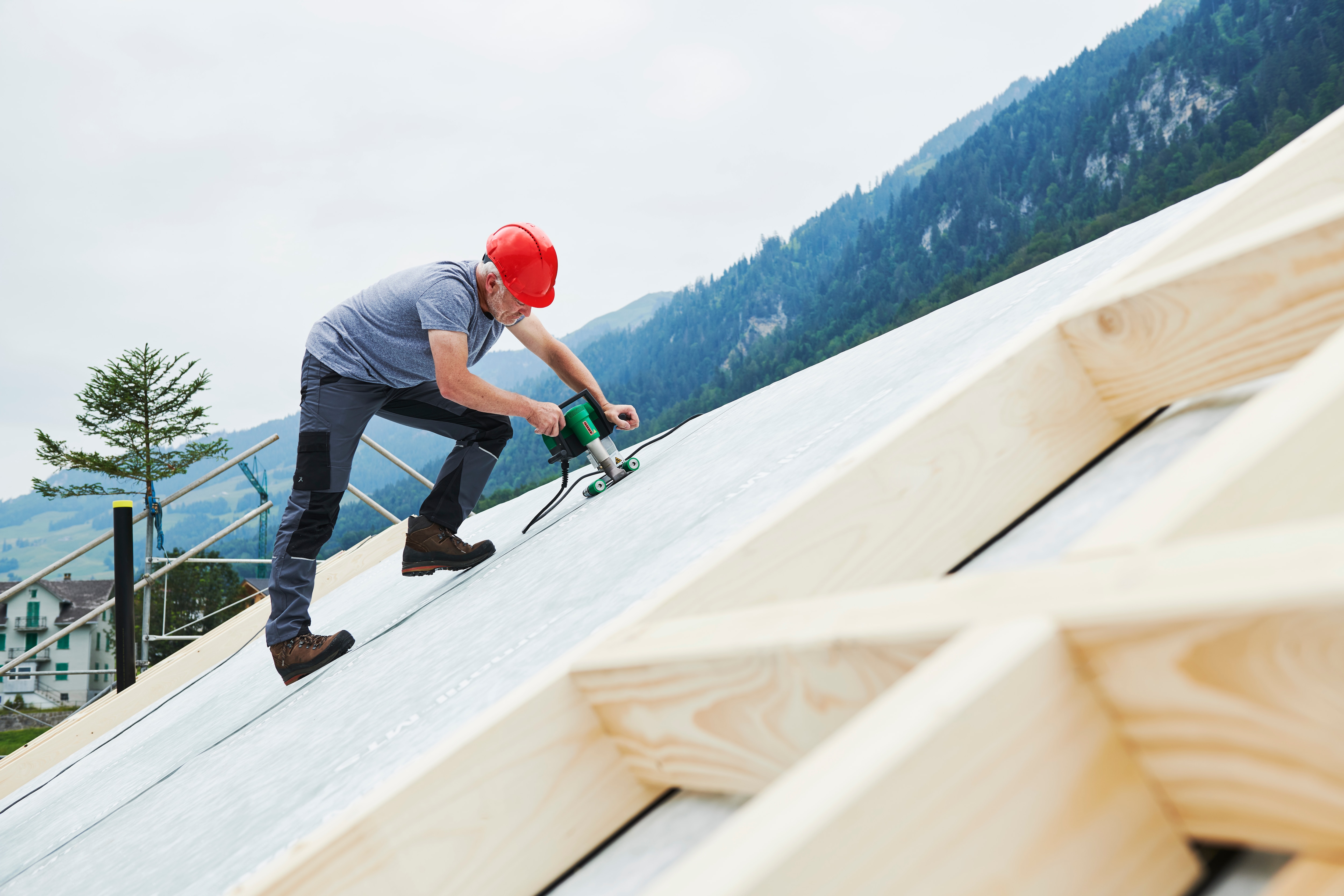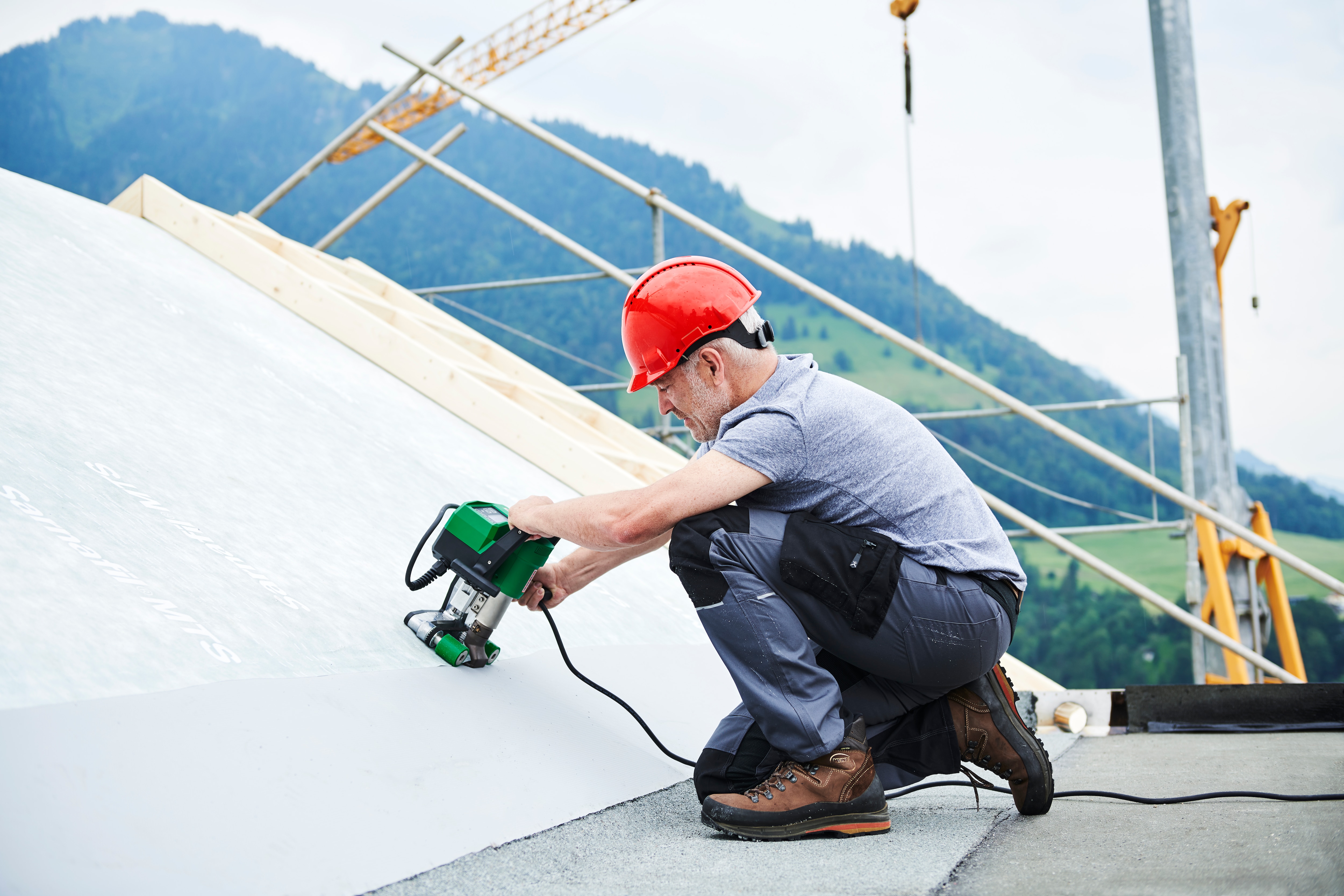The subroofing membrane as a part of the roof structure, which is laid under the actual roof covering, i.e. under the roof tiles, is a second water-draining layer that protects against drift water, capillary, backwater and condensation water as well as against dirt. If a roof membrane film is used as a subroofing membrane, it can be welded with Leister automatic welding machines.
New regulations in some European countries require homogeneous welding of roofing underlayments. Adhesive tape joints are no longer permitted. Under-roof membranes are required for additional protection under the sloping roof shingles. Both types of welding - from bottom to top and from top to bottom - are easily possible with Leister welding machines. Thanks to the optimized wedge geometry, even thin membranes (0.3 - 1.0 mm) can be welded perfectly.
For plumbing work on the roof, Leister offers special nozzles that make work easier for roofers and plumbers. Rain gutters and other metal parts made of copper, zinc and chromium steel can be soldered flamelessly and in an environmentally friendly way with the TRIAC AT and the corresponding soldering iron kit.
For further information, please refer to the expert topic “soldering”.

